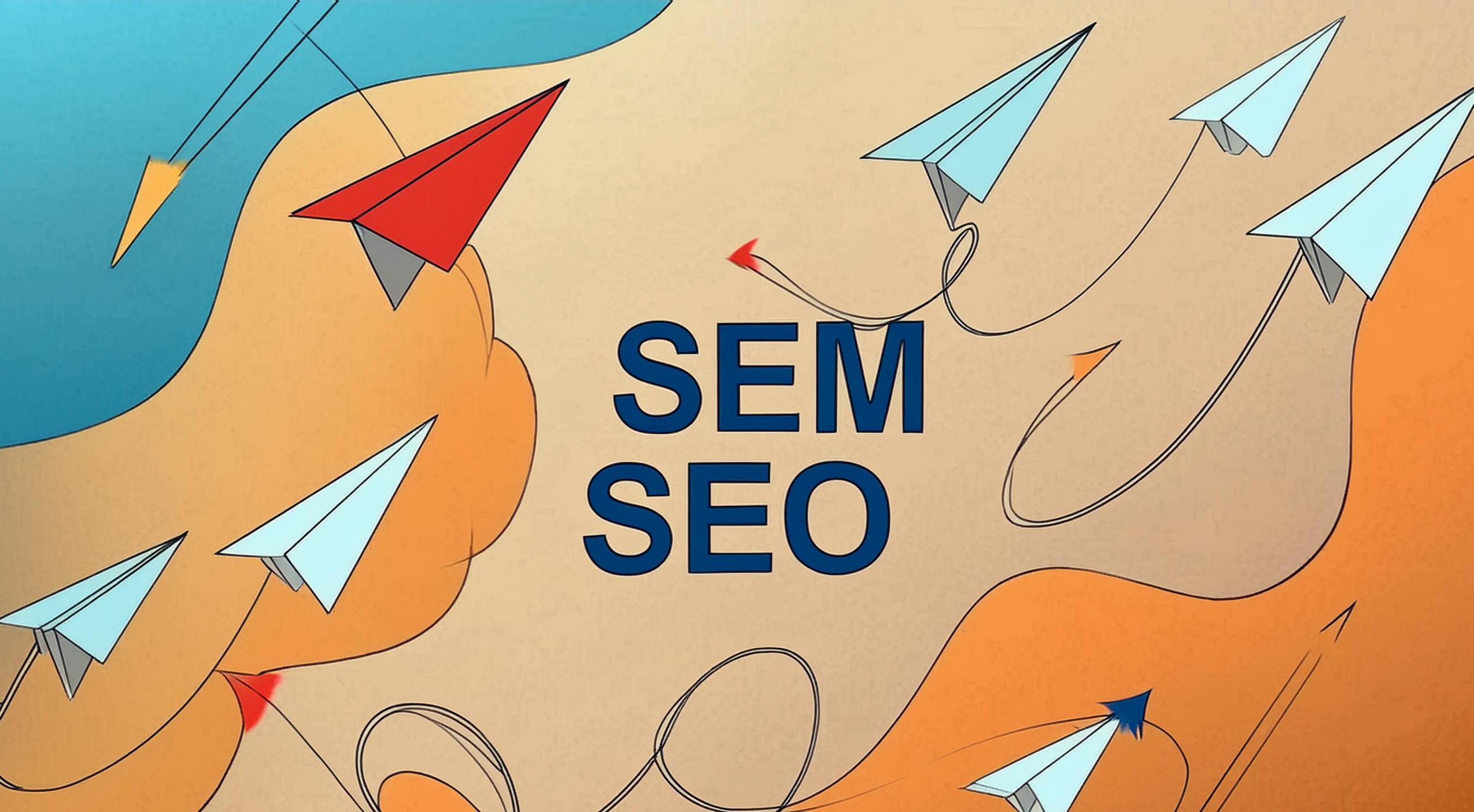
SEO vs SEM
In the ever-evolving world of digital marketing, understanding the nuances between Search Engine Optimization (SEO) and Search Engine Marketing (SEM) is crucial for crafting an effective online strategy. Whether you’re a seasoned marketer or a business owner looking to boost your online presence, knowing when to leverage SEO versus SEM can significantly impact your success. In this comprehensive guide, we’ll delve into the details of both, exploring their benefits, challenges, and how to integrate them for maximum impact.
Understanding SEO (Search Engine Optimization)
What is SEO?
SEO stands for Search Engine Optimization, a practice focused on optimizing a website to rank higher in organic (non-paid) search engine results. The goal is to increase visibility and drive more traffic to the site by making it more attractive to search engines like Google.
The history and evolution of SEO
SEO has come a long way since its inception in the 1990s. Initially, it was all about keyword stuffing and meta tags. Today, SEO encompasses a broad range of strategies, from content creation and technical optimization to user experience and mobile-friendliness.
How SEO works
SEO works by improving various elements of a website to make it more appealing to search engines. This includes optimizing content for relevant keywords, ensuring the site is technically sound, and building authoritative backlinks.
Types of SEO
On-page SEO
Importance of keyword optimization
Keyword optimization involves researching and incorporating relevant keywords into your content. This helps search engines understand what your page is about and rank it accordingly.
Meta tags and descriptions
Meta tags, including title tags and meta descriptions, provide search engines with information about your page’s content. They play a crucial role in determining how your site appears in search results.
Off-page SEO
The role of backlinks
Backlinks, or links from other websites to your site, are a critical factor in SEO. They signal to search engines that your content is valuable and trustworthy.
Social signals
While the direct impact of social signals on SEO is debated, social media activity can drive traffic to your site and indirectly boost your search rankings.
Technical SEO
Site speed and mobile-friendliness
Search engines prioritize sites that load quickly and are optimized for mobile devices. Improving these aspects can enhance your SEO performance.
XML sitemaps and robots.txt
XML sitemaps help search engines index your site more effectively, while the robots.txt file tells search engines which pages to crawl and which to ignore.
Benefits of SEO
Long-term results
Unlike paid advertising, the benefits of SEO can be long-lasting. Once your site ranks well, it can continue to attract traffic without ongoing investment.
Cost-effectiveness
While SEO requires time and effort, it can be more cost-effective than SEM in the long run, as it doesn’t involve paying for clicks or impressions.
Increased organic traffic
A well-optimized site can attract a steady stream of organic traffic, which can lead to higher conversion rates and better overall performance.
Challenges of SEO
Time-consuming process
SEO is not a quick fix. It takes time to see results, often requiring months of consistent effort.
Frequent algorithm updates
Search engines frequently update their algorithms, which can impact your rankings and require ongoing adjustments to your strategy.
High competition
With so many websites vying for the top spots, standing out in search results can be challenging.
Understanding SEM (Search Engine Marketing)
What is SEM?
SEM, or Search Engine Marketing, involves using paid strategies to increase visibility in search engine results. This includes pay-per-click (PPC) advertising, display ads, and shopping ads.
The history and evolution of SEM
SEM has evolved alongside digital advertising platforms like Google Ads. Initially focused on text ads, it now includes a variety of ad formats and targeting options.
How SEM works
SEM works by bidding on keywords to display ads to users who are searching for those terms. Advertisers pay each time their ad is clicked, driving targeted traffic to their site.
Types of SEM
Pay-per-click (PPC) advertising
Google Ads and Bing Ads
These platforms allow advertisers to bid on keywords and display ads to users. The cost per click (CPC) varies based on competition and keyword value.
Display advertising
Banner ads and remarketing
Display ads appear on websites within Google’s Display Network. Remarketing targets users who have previously visited your site, encouraging them to return.
Shopping ads
Product listing ads
Shopping ads showcase products directly in search results, complete with images, prices, and reviews. They’re particularly effective for e-commerce businesses.
Benefits of SEM
Immediate results
Unlike SEO, SEM can drive traffic almost instantly, making it ideal for time-sensitive campaigns.
High visibility
Paid ads appear at the top of search results, ensuring your site gets seen by a larger audience.
Measurable ROI
SEM allows for precise tracking and measurement, enabling advertisers to calculate their return on investment accurately.
Challenges of SEM
Costly investment
Running SEM campaigns can be expensive, especially in competitive industries where keyword bids are high.
Requires constant monitoring and adjustment
To maximize ROI, SEM campaigns need regular monitoring and optimization, which can be time-consuming.
Competition for ad space
With many businesses competing for the same keywords, getting your ads seen can be challenging.
Comparing SEO and SEM
Key differences
While SEO focuses on organic search results, SEM involves paid strategies. SEO is a long-term investment, while SEM can provide immediate results.
When to use SEO
SEO is ideal for building long-term visibility and attracting organic traffic. It’s cost-effective and can deliver sustainable results.
When to use SEM
SEM is best for driving quick traffic, especially for time-sensitive promotions or new product launches. It ensures high visibility and measurable outcomes.
Integrating SEO and SEM Strategies
The benefits of a combined approach
Combining SEO and SEM can provide the best of both worlds. SEO builds a strong foundation, while SEM drives immediate traffic.
How to balance SEO and SEM
Balancing the two involves using SEO for long-term growth and SEM for short-term boosts. Regularly analyze performance data to adjust your strategy as needed.
Case studies and examples
Examining successful case studies can provide insights into how businesses have effectively integrated SEO and SEM. For instance, a company might use SEM to promote a new product while relying on SEO for ongoing traffic.
SEO vs. SEM: Which is Better?
Factors to consider
Choosing between SEO and SEM depends on your goals, budget, and timeline. Consider your industry’s competitiveness and the nature of your business.
Industry-specific insights
Different industries may benefit more from one approach over the other. For example, e-commerce sites might see immediate benefits from SEM, while content-based sites might thrive with SEO.
Budget considerations
Your budget will play a significant role in determining your strategy. SEO typically requires a lower initial investment, while SEM can be costly but provides faster results.
Future Trends in SEO and SEM
Voice search optimization
As voice search grows in popularity, optimizing for natural language queries will become increasingly important for both SEO and SEM.
AI and machine learning
These technologies are transforming how search engines operate, making it essential to stay updated on their impact on SEO and SEM strategies.
Evolving search algorithms
Search engines continuously update their algorithms, emphasizing the need for ongoing adaptation in both SEO and SEM tactics.
Conclusion
Both SEO and SEM are essential components of a robust digital marketing strategy. By understanding their differences, benefits, and challenges, you can make informed decisions about which to prioritize and how to integrate them for optimal results. Remember, a balanced approach often yields the best outcomes, leveraging the strengths of both SEO and SEM to achieve your marketing goals.
FAQs
What is the main difference between SEO and SEM?
SEO focuses on organic search results and long-term traffic growth, while SEM involves paid strategies to achieve immediate visibility in search results.
How long does it take to see results from SEO?
SEO typically takes several months to show significant results, as it involves building authority and optimizing various aspects of your site.
Is SEM better than SEO for a new website?
For a new website, SEM can provide quick traffic and visibility, but integrating SEO from the start is crucial for long-term growth.
Can I do both SEO and SEM together?
Yes, combining SEO and SEM can be highly effective, providing immediate traffic while building a sustainable organic presence.
How do I choose between SEO and SEM?
Consider your goals, budget, and timeline. Use SEM for quick results and time-sensitive campaigns, and rely on SEO for long-term growth and cost-effectiveness.
Share this article
Written by : Support Desk
Follow us
A quick overview of the topics covered in this article.
Latest articles
May 18, 2025
May 18, 2025
May 18, 2025





